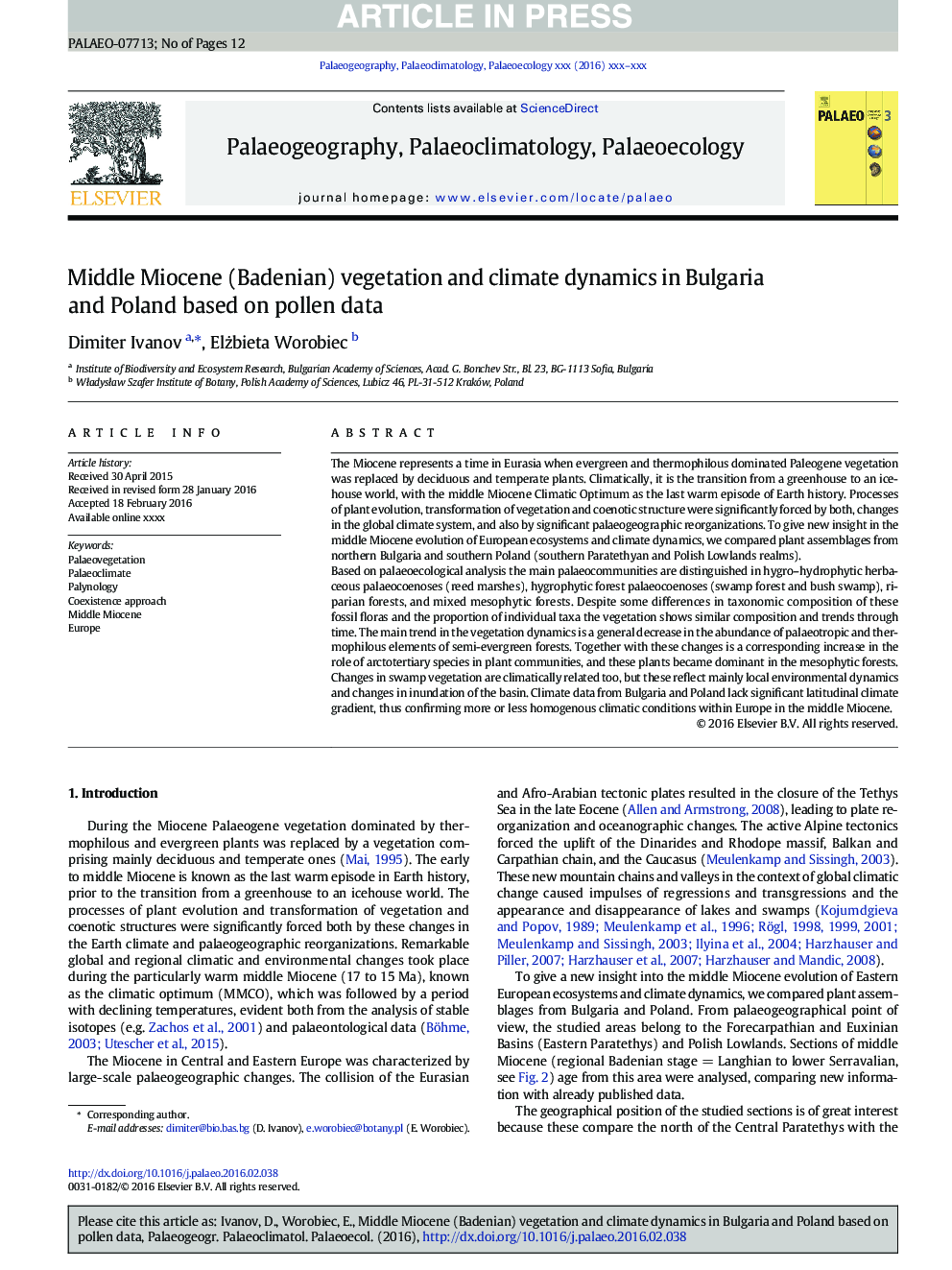| Article ID | Journal | Published Year | Pages | File Type |
|---|---|---|---|---|
| 5755977 | Palaeogeography, Palaeoclimatology, Palaeoecology | 2017 | 12 Pages |
Abstract
Based on palaeoecological analysis the main palaeocommunities are distinguished in hygro-hydrophytic herbaceous palaeocoenoses (reed marshes), hygrophytic forest palaeocoenoses (swamp forest and bush swamp), riparian forests, and mixed mesophytic forests. Despite some differences in taxonomic composition of these fossil floras and the proportion of individual taxa the vegetation shows similar composition and trends through time. The main trend in the vegetation dynamics is a general decrease in the abundance of palaeotropic and thermophilous elements of semi-evergreen forests. Together with these changes is a corresponding increase in the role of arctotertiary species in plant communities, and these plants became dominant in the mesophytic forests. Changes in swamp vegetation are climatically related too, but these reflect mainly local environmental dynamics and changes in inundation of the basin. Climate data from Bulgaria and Poland lack significant latitudinal climate gradient, thus confirming more or less homogenous climatic conditions within Europe in the middle Miocene.
Related Topics
Physical Sciences and Engineering
Earth and Planetary Sciences
Earth-Surface Processes
Authors
Dimiter Ivanov, Elżbieta Worobiec,
